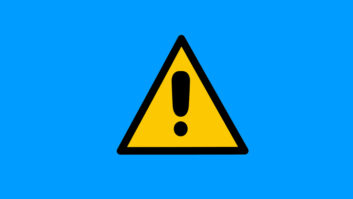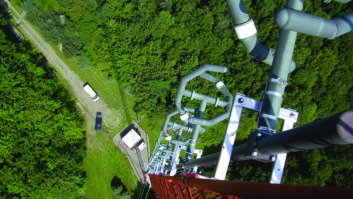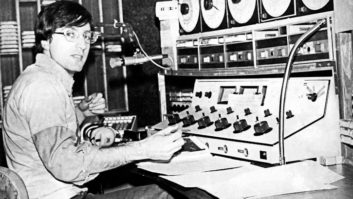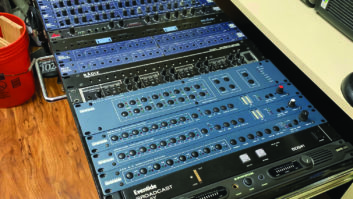I think the terms “keys” and “broadcast engineer” are synonyms.
Frequent Workbench contributor William Harrison, who works at FM station WETA in the nation’s capital, attended one of my SBE Workbench webinars, in which I spoke about managing engineering keys.
Rather than search through a ring for the right one, William uses a 40-key organizing panel that hangs in a locked file cabinet. It has a spot for every key.
Even if you prefer to carry a ring, it’s good practice to store duplicate keys for each lock in an organizer like this. Head to the Craftmaster Hardware website. This key file costs about $64 and comes with numbered key tags, out tags and control chart. The company also sells a Lund steel wall cabinet that holds 400 keys and costs around $1,300.

If you’re a contract engineer I’d like to hear how you manage your client’s keys. When I practiced, each engineer had a set of client keys, kept in a box originally designed to hold a microphone. Email your thoughts to me at [email protected].
In that SBE presentation we also discussed using green LED “ropes” above the front of each transmitter, to indicate which transmitter is on the air. William has seen this idea taken a little further by tying the LED strip to an alarm output, so under normal circumstances, the strip is green, but when an alarm is present, it turns red. Add a security camera to the site, and the visual warning will help you diagnose the problem before you arrive.
Some stinging remarks
Steve Tuzeneu, CBT, is chief engineer for Hall Communications’ cluster in Lakeland, Fla. He sends a picture of a variation on a feed horn protector.
Summer weather brings nesting insects and birds. The photo shows a piece of non-metallic screen that is held in place with a large hose clamp to cover the throat of the feed horn. Big box stores and auto supply outlets have the large hose clamps.
If you don’t protect your feed horn, wasps may take up residence. In addition to being annoying and dangerous, they can interfere with your satellite signal.

A dry suggestion
Fellow RW contributor Michael Baldauf writes that one of the most important aspects of managing transmitter sites is monitoring and controlling critical equipment from other locations. Connecting all that gear into the remote control system can be challenging.
Often overlooked is the hardware that dehydrates and pressurizes your coaxial cables. The little unit may have a manual gauge but no real method of interfacing to the remote control. Considering that these devices protect everything from the transmitter to the antenna, consider investing in a better system.
At the recent NAB Show, Michael came across Altecair, which was showing its P210WLP-V Dehydrator. Parameters accessible on the front or via SNMP server include runtime information, temperature and humidity readings, alarms, remote monitoring as well as control and reset capability.
Dehydrators are also available from Kintronic Labs. Models are available for various types and lengths of transmission line.
Take a look at this class of products, especially if you manage a site that is virtually inaccessible for months.
Cutting comments
Continuing our discussion of trusty tools to keep at hand, New England contract engineer Stephanie Donnell has learned to appreciate pocketknives, specifically the Victorinox Swiss Army knives she discovered in a cutlery store more than 40 years ago.
She liked the Super Tinker model because it had a blade for Phillips screws. Later she carried the CyberTool 41, recently renamed the CyberTool L. Stephanie can’t count the number of times this tool has saved her bacon.

For example, in addition to a 3/16-inch bit holder and several straight and Phillips bits, the knife has a couple of Torx bits. When she went to tweak settings on a Broadcast Tools silence sensor, the knife allowed her to open the cover, which used a Torx screw. And the 3/16-inch bit holder has been a lifesaver for turning jack screws on sub-miniature DB connectors. Its saw blade will also cut a 2×4 or even a small tree.
Here’s a five-minute YouTube video demonstrating the tools of the CyberTool L.
You may remember another type of useful knife being sold in Radio Shack years ago: mini box cutters. These are handy for general use like opening packages or stripping wire. But don’t forget to remove them from your key ring before you head to the airport.
Stephanie lives near Concord, N.H., and likes to visit the New Hampshire state surplus store where, among other things, you can buy items confiscated by the TSA. It has bins and bins of Swiss Army, Leatherman and SOG knives as well as assorted hand tools, most of which cost just a few dollars.

Workbench submissions are encouraged and qualify for SBE recertification credit. Email [email protected].







